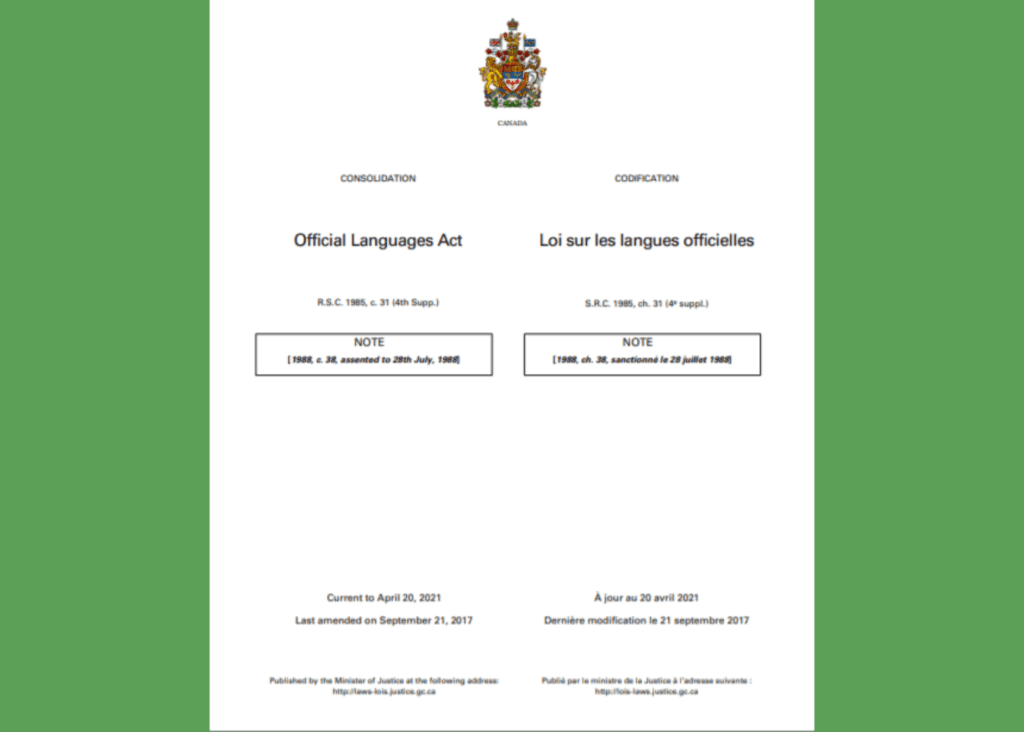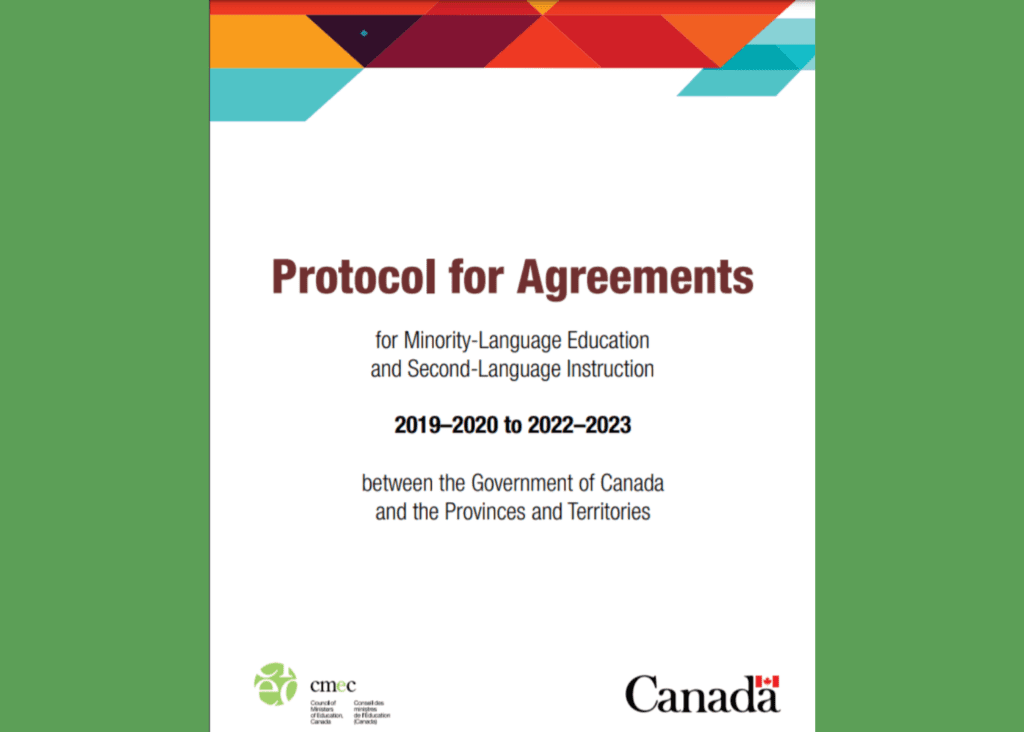Did you know that Canada’s official languages are protected by two key pieces of legislation? Can you guess which ones?
That’s right! The Canadian Charter of Rights and Freedoms and the Official Languages Act.

The Canadian Charter of Rights and Freedoms
The Charter became entrenched in the Canadian Constitution in 1982. This means it forms part of the supreme law of our land. The Charter identifies and protects Canadians’ shared basic values and fundamental freedoms.
The Charter also protects the equality of status of Canada’s two official languages and minority language education rights.
Interested in learning more? You can read the Charter here (especially section 1 and sections 16 to 23).
CPF’s mandate is to provide accurate information to parents so they can make informed decisions when choosing French as a second language learning opportunities for their children.
Our role is not to determine who should or should not be admitted to a French first language school, nor to intervene with a school jurisdiction’s decision to approve or deny admission to any individual student. CPF will not assist a parent in an appeal process should their child be denied admission.
Official Languages Act
Part VII of the Official Languages Act picks up on the Charter’s reference to “advancing the equality of status and use” of Canada’s official languages.
We know you might not have time to read the full thing, so we’ve picked out two important sections for you.
Section 41 states that:
- the Government of Canada is committed to enhancing the vitality of the English and French linguistic minority communities in Canada and supporting and assisting their development; and fostering the full recognition and use of both English and French in Canadian society.
Section 43 lists specific measures that the Minister can take to enhance the equality of status and use of both official languages, including:
- encouraging and support the learning of English and French in Canada;
- fostering an acceptance and appreciation of both English and French by members of the public; and
- encouraging and assisting provincial governments to provide opportunities for everyone in Canada to learn both English and French.
The Act also encourages private and voluntary sector organizations to provide their services in both English and French, foster the recognition and use of these languages and project the bilingual character of Canada in their activities in Canada and beyond.
Does this sound familiar…?
If you’re interested in knowing more, here’s a link to the full Act.
CPF is proud to emphasize that the Act is inclusive, as it states that First Nations, Métis and Inuit languages and culture are an integral part of the Canadian identity


Modernization of the Official Languages Act
2019 marked the 50th Anniversary of the Official Languages Act.
It also marked the year when many organizations, including the Office of the Commissioner of Official Languages (OCOL), started pushing for its modernization. As a result, a pan-Canadian consultation was held by the Government of Canada. Steps have recently been taken to update it.
The Official Languages in Education Program (OLEP) Protocol and Agreements
Actions always have to accompany words! That’s why, via the Official Languages in Education Program (OLEP), the Government of Canada also provides financial support to the provinces and territories for:
- primary, secondary and post-secondary minority language education;
- second language education programs; and
- summer language bursaries, official-language monitors and special projects .
The Government of Canada and the provincial/territorial governments have also jointly agreed to a strategic framework that identifies six areas of intervention for each linguistic objective:
- Student Participation: Recruitment and Retention of Students in French Second Language Education Programs up to Secondary School Graduation;
- Provision of Programs: Maintenance, Development, Enrichment and/or Evaluation of Programs and Innovative Teaching Approaches for Second Language Learning;
- Student Performance: Acquisition of Measurable Second Language Competencies for Students;
- Enriched School Environment: Enrichment of Second Language Learning through Curricular and Extracurricular Initiatives;
- Improved Access to Post-Secondary Education; and
- Support for Educational Staff and Research.
